Are you looking to learn all about hog wire fencing? Look no further, because we’ve got you covered! In this article, we will dive into all the important details about hog wire fencing and answer any questions you may have. By the end of this article, you’ll have a clear understanding of what hog wire fencing is, its uses, and its benefits. So, let’s get started!
Hog wire fencing is a type of fence that is commonly used for containment, security, and livestock management. It is made up of sturdy galvanized wires that are welded together to form a grid pattern. This grid pattern makes the fencing strong and durable, perfect for keeping animals in or out of a designated area. Hog wire fencing is commonly used for enclosures for hogs and other livestock, hence its name.
In this article, we will discuss hog wire fencing in detail, including its various applications in agriculture and residential settings. We will explore the different types of hog wire fencing, the materials used, and the proper installation techniques. Additionally, we will address common questions and concerns that people have about hog wire fencing. So, if you want to learn more about how hog wire fencing can be an excellent option for your fence needs, keep reading!
All About Hog Wire Fencing
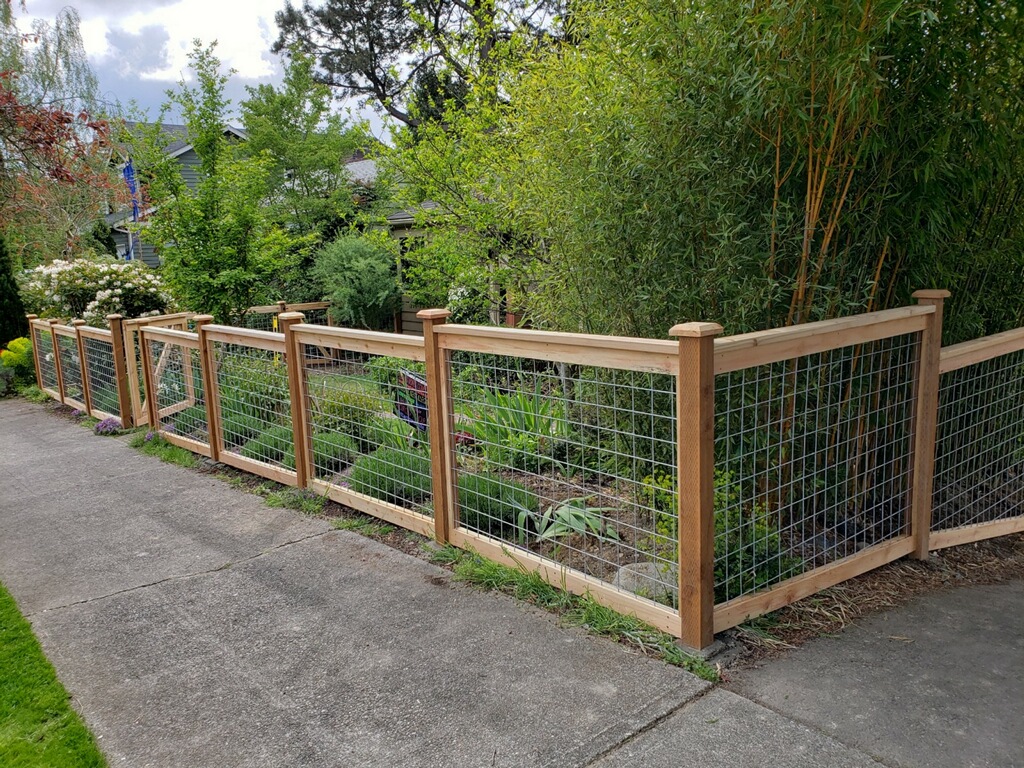
Introduction
Hog wire fencing, also known as hog panel fencing or hog range fencing, is a popular choice for various applications due to its durability, affordability, and versatility. It is named after its original purpose of enclosing hog pens, but its applications have expanded to include garden fencing, livestock containment, and even privacy fencing. In this article, we will delve into the world of hog wire fencing, exploring its advantages, disadvantages, different types, installation process, maintenance and care, cost analysis, common mistakes to avoid, various purposes, legal considerations, comparisons with other fence types, and address frequently asked questions, providing you with a comprehensive understanding of this type of fencing.
1. What is Hog Wire Fencing?
Hog wire fencing is a type of wire mesh fence that is constructed using heavy-gauge galvanized steel wires. The wires are welded or woven together to create a sturdy grid-like pattern, with larger openings compared to traditional chain link fences. This design provides visibility and allows air to pass through, making it ideal for applications where containment is necessary without compromising the view or air circulation.
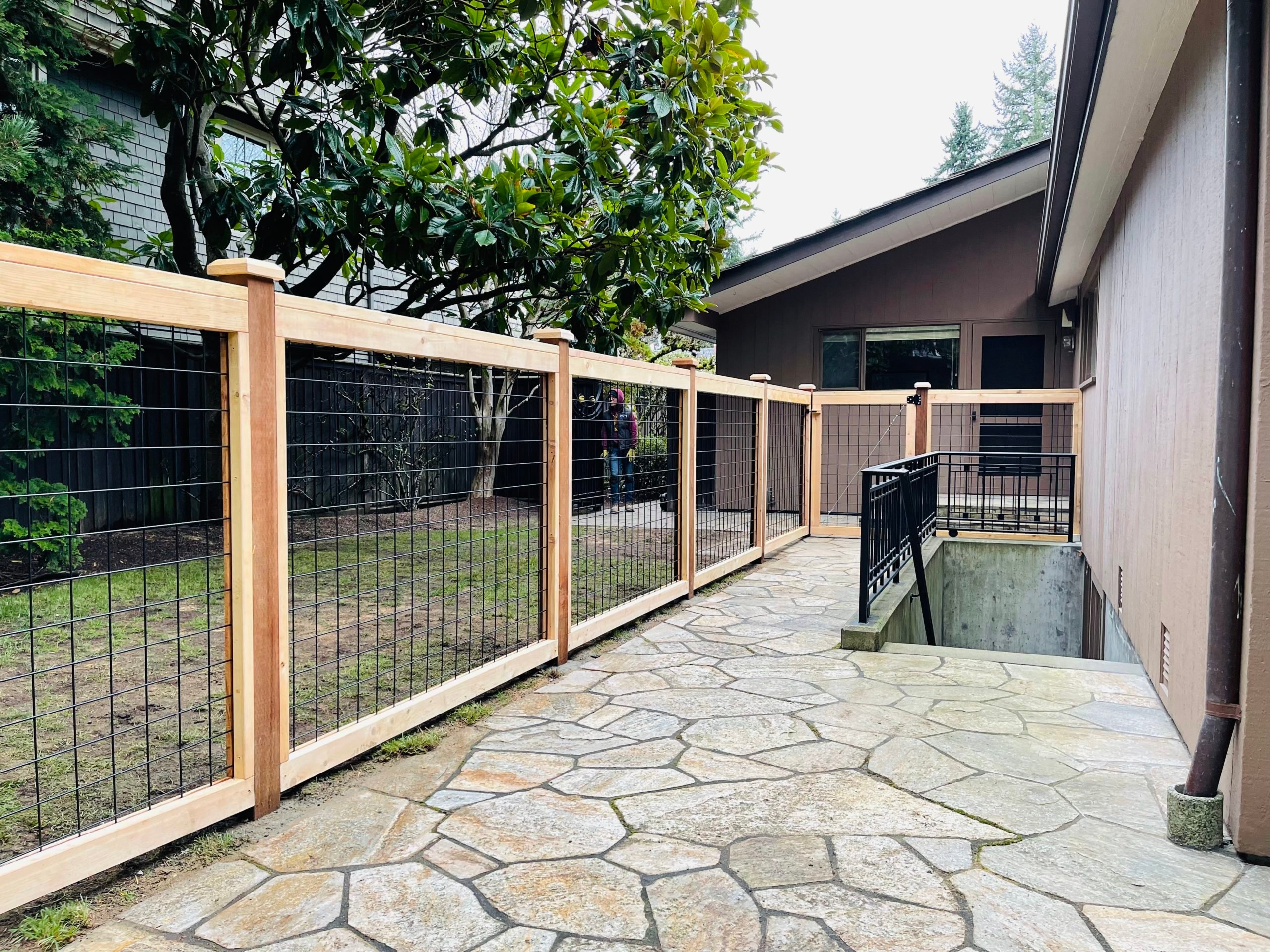
2. Advantages of Hog Wire Fencing
Hog wire fencing offers several advantages that make it a popular choice among homeowners, farmers, and DIY enthusiasts. Firstly, its high tensile strength and sturdy construction provide excellent durability, allowing it to withstand various weather conditions and potential impact from animals or intruders. Additionally, hog wire fencing is relatively affordable compared to other types of fencing, making it a cost-effective option for large areas. Furthermore, the open grid design of hog wire fencing allows for increased visibility, making it ideal for areas where you want to maintain a scenic view. Lastly, hog wire fencing is versatile and can be used for a range of purposes, from keeping livestock contained to creating decorative garden enclosures or privacy screens.
3. Disadvantages of Hog Wire Fencing
While hog wire fencing has numerous advantages, it also comes with a few drawbacks that should be considered. The larger openings in the wire mesh can make it easier for smaller animals to squeeze through, so additional measures may be necessary to prevent unwanted intrusions. Additionally, the open design of hog wire fencing may not provide complete privacy, as there are gaps between the wires. If privacy is a top priority, alternative fencing options may be more suitable. Lastly, hog wire fencing requires regular maintenance to prevent rust and damage, which we will discuss in detail later in this article.
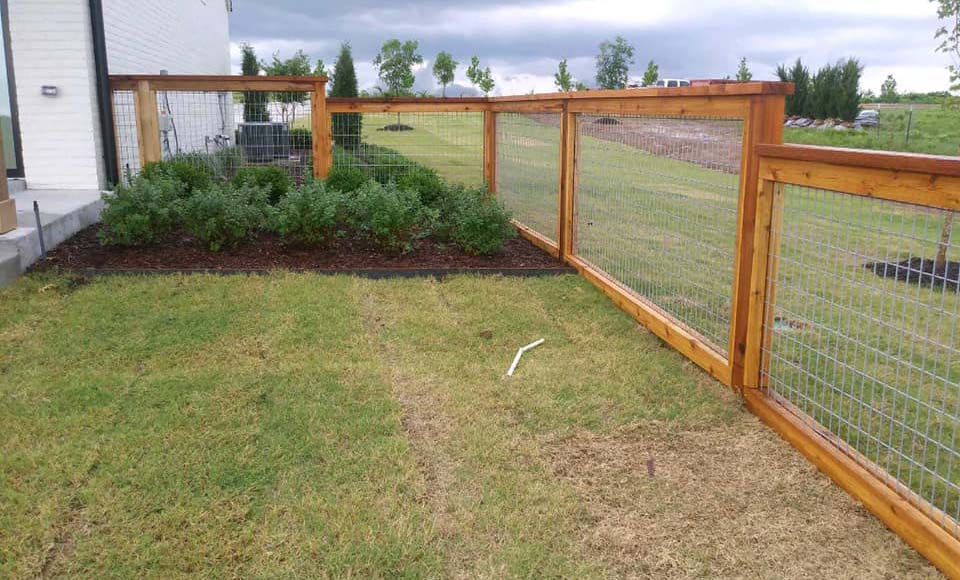
4. Different Types of Hog Wire Fencing
There are several different types of hog wire fencing available, each with its own unique characteristics and uses. These include welded hog wire fencing, woven hog wire fencing, and hog panel fencing.
4.1 Welded Hog Wire Fencing
Welded hog wire fencing consists of individual steel wires that are welded together at their intersections, resulting in a solid and sturdy fence panel. This type of hog wire fencing is known for its strength and rigidity, making it suitable for heavy-duty applications such as livestock containment.
4.2 Woven Hog Wire Fencing
Woven hog wire fencing is created by intertwining individual wire strands to form a mesh pattern. This type of hog wire fencing offers more flexibility compared to welded fencing, allowing it to conform to uneven terrain or curves. Woven hog wire fencing is often used in garden applications or areas where a more decorative look is desired.
4.3 Hog Panel Fencing
Hog panel fencing is made from large, heavy-gauge wire panels that are often 4 to 5 feet in height. These panels are specifically designed for hog containment but have found popularity in other applications as well. Hog panel fencing is easy to install and provides a secure enclosure for various purposes, including livestock, gardens, or even as a trellis for climbing plants.
5. Installation Process of Hog Wire Fencing
Proper installation is crucial for the effectiveness and longevity of hog wire fencing. Follow these steps to ensure a successful installation:
5.1 Preparing the Area
Before installing hog wire fencing, it is essential to prepare the area properly. Clear any vegetation, rocks, or debris that may obstruct the installation process. Mark the boundaries of the fence and ensure that there are no underground utilities such as water pipes or electrical lines in the intended area.
5.2 Setting Up the Posts
The next step is to install the posts that will support the hog wire panels. Use sturdy and long-lasting materials such as treated wood or metal posts. Dig post holes at regular intervals along the fence line, ensuring a depth that allows for stability, typically at least one-third of the post’s total length. Place the posts in the holes, ensuring they are straight and level, and backfill with concrete or gravel to secure them in place.
5.3 Attaching the Hog Wire Panels
Once the posts are set, it’s time to attach the hog wire panels. Position the panels vertically between the posts, ensuring they are level and evenly spaced. Use appropriate fasteners such as U-shaped nails or hog rings to secure the panels to the posts. Start at one end and work your way along the fence, ensuring a tight and secure fit.
5.4 Securing the Panels
After attaching the hog wire panels, reinforce the stability of the fence by adding additional support. This can be done by attaching horizontal support boards along the top and bottom of the fence, or by using tension wire or cables to connect the panels to the posts. These measures will ensure that the fence remains stable and rigid over time.
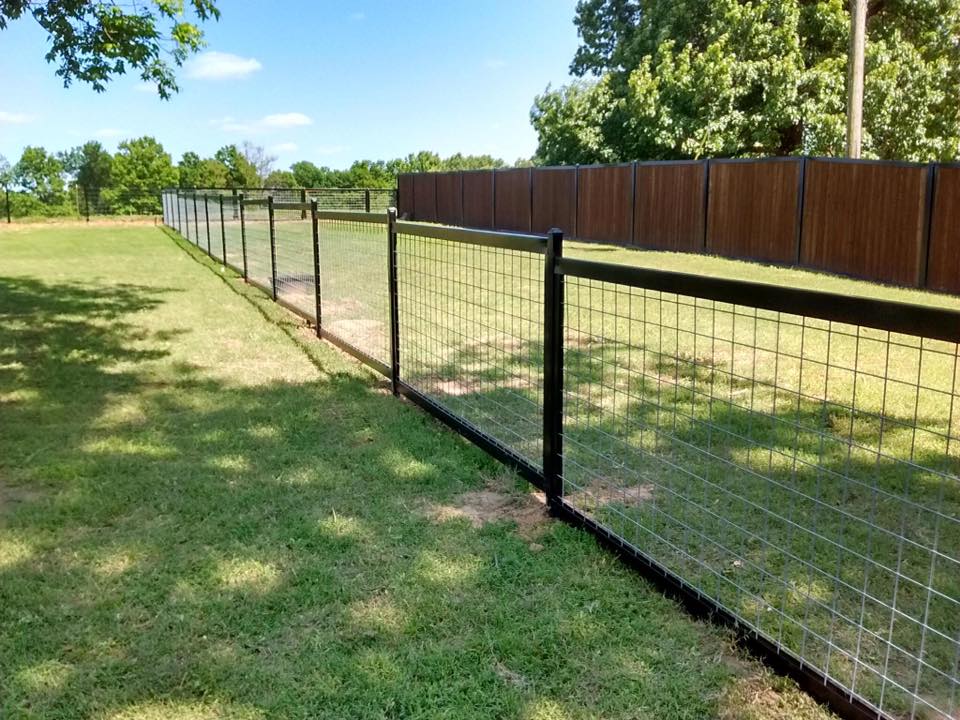
6. Maintenance and Care of Hog Wire Fencing
To prolong the lifespan of hog wire fencing and maintain its functionality, regular maintenance is essential. Here are some key aspects to consider:
6.1 Regular Cleaning
Clear any debris that accumulates on or around the fence, as it can lead to moisture retention and potential rust. Use a brush or hose to remove dirt, leaves, or other organic materials. Regular cleaning prevents the buildup of grime and extends the lifespan of the fence.
6.2 Preventing Rust
Hog wire fencing is typically galvanized to provide protection against rust and corrosion. However, over time, the galvanized coating may wear off, exposing the underlying steel. To prevent rust, regularly inspect the fence for any signs of corrosion or damage. If necessary, apply a rust-resistant coating or paint to protect the fence and ensure its longevity.
6.3 Inspecting and Repairing Damages
Periodically inspect the hog wire fencing for any signs of damage, such as loose wires, bent panels, or broken fasteners. Promptly repair any damages to maintain the integrity of the fence. Replace any broken or damaged panels or wires to prevent potential breaches in containment.
6.4 Enhancing Durability
To enhance the durability of hog wire fencing, consider applying a protective sealant or coating. This can provide an additional layer of defense against rust, UV damage, and wear. Consult with a fence specialist or research suitable products to select the most appropriate sealant for your specific needs.
7. Cost Analysis of Hog Wire Fencing
When considering the installation of hog wire fencing, it is important to assess the costs involved. Here is a breakdown of the main cost considerations:
7.1 Material Costs
The cost of the materials required for hog wire fencing can vary depending on factors such as the size of the area to be fenced and the type of hog wire panel chosen. Welded hog wire fencing tends to be more expensive compared to woven or hog panel fencing. Additionally, consider the cost of posts, fasteners, and any additional reinforcement materials.
7.2 Labor Costs
If you choose to hire professionals for the installation of hog wire fencing, labor costs should be factored into the overall expenses. The complexity of the project and the experience and expertise of the installer will influence the labor costs.
7.3 Overall Expenses
Considering the material costs, labor costs (if applicable), and any additional expenses such as permits or tools, you can determine the overall cost of the hog wire fencing project. It is recommended to obtain multiple quotes from reputable contractors to ensure a fair and competitive price.
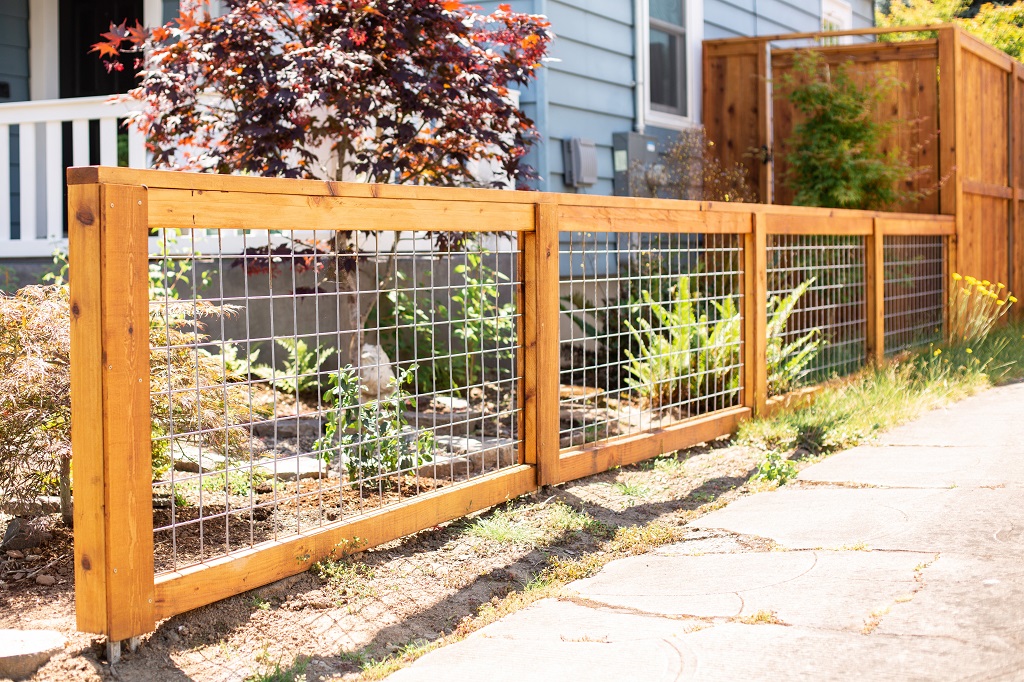
8. Common Mistakes to Avoid with Hog Wire Fencing
While hog wire fencing is relatively straightforward to install and maintain, there are a few common mistakes that should be avoided. These include improper post placement, insufficient reinforcement, using incorrect fasteners, neglecting regular maintenance, and not considering specific needs for containment or privacy. By being aware of these potential mistakes, you can ensure a successful and long-lasting hog wire fencing installation.
9. Using Hog Wire Fencing for Different Purposes
Hog wire fencing offers versatility and can be utilized for various purposes. Here are a few common applications:
9.1 Garden Fencing
Hog wire fencing can be an excellent choice for protecting gardens from animals while still allowing visibility and airflow. It can be used to create raised beds, enclose vegetable patches, or deter larger pests from damaging plants.
9.2 Livestock Fencing
Hog wire fencing’s original purpose was to contain hogs, and it remains a popular choice for livestock applications. Robust and durable, it can be used to create pens, enclosures, or grazing areas for horses, cows, sheep, and other animals.
9.3 Privacy Fencing
While hog wire fencing may not provide complete privacy due to its open design, it can still be utilized to create privacy screens. By attaching shade cloth or planting climbing vines, hog wire panels can offer a balance between privacy and aesthetic appeal.
10. Legal Considerations for Hog Wire Fencing
Before installing hog wire fencing, it is important to research and adhere to any local regulations or restrictions regarding fence height, setback requirements, or other limitations. Consult with your local municipality or homeowners’ association to ensure compliance with applicable laws and regulations.
11. Comparing Hog Wire Fencing with Other Fence Types
To determine the best fencing option for your specific needs, it is important to compare hog wire fencing with other popular fence types. Consider factors such as budget, durability, maintenance requirements, aesthetics, and intended purpose. Chain-link fencing, wooden fences, vinyl fences, and wire mesh fences are some alternatives that may be worth considering in comparison.
12. Frequently Asked Questions about Hog Wire Fencing
Here are some frequently asked questions about hog wire fencing:
-
Q: Can hog wire fencing be used for security purposes? A: While hog wire fencing provides a certain level of containment, it may not be the best option for high-security applications. Consider additional security measures such as surveillance cameras or barbed wire if security is a top priority.
-
Q: Can I paint hog wire fencing to match my outdoor decor? A: Yes, hog wire fencing can be painted to match your outdoor decor. Ensure that the paint used is suitable for metal surfaces and provides rust-resistant properties.
-
Q: Can hog wire fencing be used in areas with extreme weather conditions? A: Hog wire fencing is generally durable and can withstand various weather conditions. However, in areas with extreme weather conditions, additional reinforcement or specialized materials may be required.
-
Q: How long does hog wire fencing typically last? A: The lifespan of hog wire fencing depends on various factors, including the quality of materials used and the level of maintenance. With proper care and maintenance, hog wire fencing can last for many years.
Conclusion
Hog wire fencing offers a versatile and practical solution for various fencing needs. Its durability, affordability, and ease of installation make it a popular choice among homeowners, farmers, and DIY enthusiasts. By understanding the advantages, disadvantages, installation process, maintenance requirements, and various applications of hog wire fencing, you can make an informed decision and enjoy the benefits that this type of fencing provides. Whether you want to enclose your garden, contain livestock, or add a decorative touch to your outdoor space, hog wire fencing is worth considering. Remember to prioritize safety and compliance with local regulations when planning your hog wire fencing project.